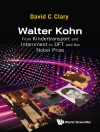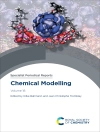The understanding in science implies insights from several different points of view. Alternative modern outlooks on electronic structure of atoms and molecules, all rooted in quantum mechanics, are presented in a single text. Together these complementary perspectives provide a deeper understanding of the localization of electrons and bonds, the origins of chemical interaction and reactivity behavior, the interaction between the geometric and electronic structure of molecules, etc. In the opening two parts the basic principles and techniques of the contemporary computational and conceptual quantum chemistry are presented, within both the wave-function and electron-density theories. This background material is followed by a discussion of chemical concepts, including stages of the bond-formation processes, chemical valence and bond-multiplicity indices, the hardness/softness descriptors of molecules and reactants, and general chemical reactivity/stability principles. The insights from Information Theory, the basic elements of which are briefly introduced, including the entropic origins and Orbital Communication Theory of the chemical bond, are the subject of Part IV. The importance of the non-additive (interference) information tools in exploring patterns of chemical bonds and their covalent and ionic components will be emphasized.
Cuprins
Sources.- Mathematical apparatus.- Basic concepts and axioms.- Hydrogen-like atom.- Approximating N-electron Schrödinger equation.- Wave function methods.- Density-Functional Theory.- Bonded subsystems and chemical bonds.- Concepts for chemical reactivity.- Adiabatic coupling between electronic and geometric structures.- Elements of information theory.- Schrödinger equation as information principle.- Electron probabilities as carriers of information in molecules.- Bonded atoms from information theory.- Molecular communication systems.- Orbital communication theory of the chemical bond.- ‘Thermodynamic’ description.












